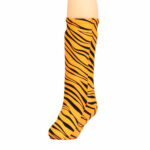In this Facebook Live: All Things Orthopedic, Annette de Lancey (Founder and Owner of CastCoverz!) discusses ways to protect your orthopedic device from the elements (cold weather, rain, wind, snow… ETC) with guest Dr. Scott Hoffinger, Medical Director of OrthoPediatrics, and Board Certified Orthopedic Surgeon.
While having a cast may not be ideal, it will NOT prevent kids from trying to participate in normal activities. It is also not surprising that kids will find a way to get a cast wet, get it dirty and get involved. The best thing to do is plan ahead. If your child is going to be doing things that could get their cast wet or dirty, there is a need to protect the cast.
CastCoverz! has many products to keep casts and boots from getting wet from adverse weather conditions, shield from biting wind, and help them to stay dry. For arms we have CastCoverz! Mittz! Cozy and Mittz! Dry, which are designed for convenience as well as function and comfort. This product is weather-resistant but not meant for immersion, and paired together can provide superior protection from wet weather (rain, snow) and biting wind conditions.
Slickerz! which is a similar product for your leg is also weather-resistant and is used to protect your cast and your toes. Our BootGuardzXtreme! is for the orthopedic walking boot. It protects your orthopedic walking boot, boot liner, and toes from wind, rain and snow with our made-in-the-USA weather resistant material.
Keeping your orthopedic device clean and dry can stop infection, and help your injury heal better, so you feel better!








